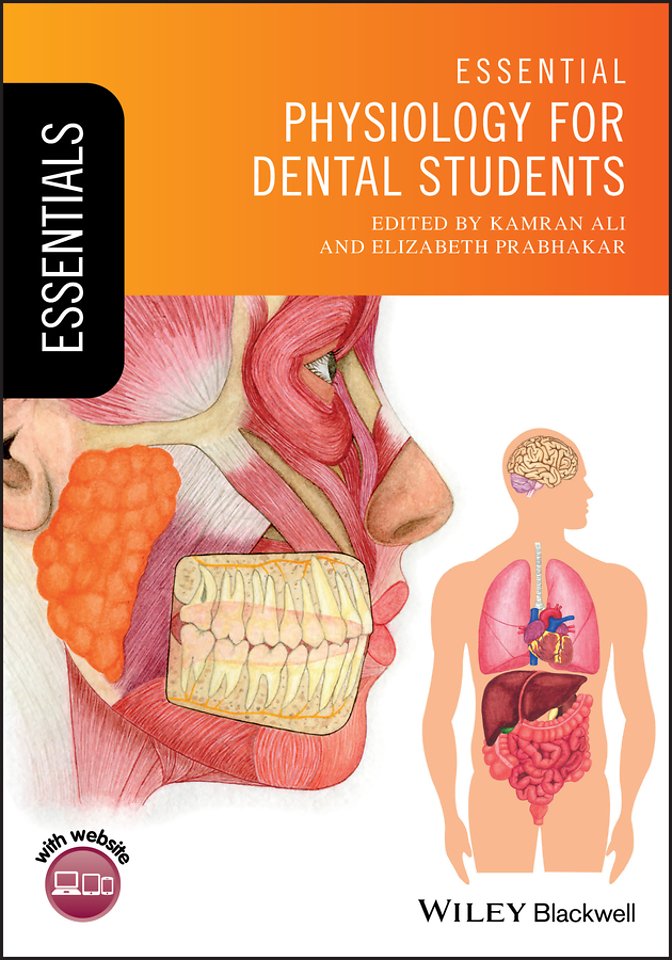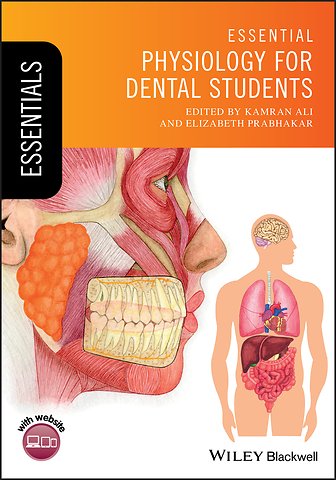Essential Physiology for Dental Students
Samenvatting
Essential Physiology for Dental Students offers comprehensive information on human physiology, tailored to the needs of students of dentistry. This new addition to the Dentistry Essentials series helps students gain a deeper understanding of how physiological concepts apply to clinical dental practice. Each chapter outlines an organ system in sufficient detail whilst emphasizing its relevance to clinical dentistry. Written in a student–friendly style, it contextualizes how normal and altered physiology affects dental care and highlights the implications of dental interventions on the body s functioning.
Essential Physiology for Dental Students provides readers with complete coverage of: cell physiology; nerve and muscle physiology; the cardiovascular system; the respiratory system; the gastro–intestinal system; the renal system; haematology; endocrinology including the regulation of blood glucose and blood calcium; and the central nervous system.
Covers each system in detail, while emphasizing the relevance to dental students
Presented using a reader–friendly layout with illustrations and clinical photographs throughout
Features interactive MCQs and EMQs and downloadable images on a companion website
Essential Physiology for Dental Students is an excellent resource for undergraduate dentistry students, dental hygiene and therapy students, and dental nursing students. It also greatly benefits newly qualified dentists preparing for postgraduate examinations such as MFDS, LDS, ORE, and also the US National Boards.
Specificaties
Inhoudsopgave
<p>List of Contributors</p>
<p>Introduction</p>
<p>Chapter 1: The Cell Structure and Function</p>
<p>Nerve Muscle Physiology</p>
<p>Chapter 2: Nerve Physiology</p>
<p>Chapter 3: Muscle Physiology</p>
<p>Cardiovascular System</p>
<p>Chapter 4: Heart</p>
<p>Chapter 5: The Circulatory System</p>
<p>Respiratory System</p>
<p>Chapter 6: Mechanics of respiration</p>
<p>Chapter 7: Gas Exchange and Transport</p>
<p>Chapter 8: Control of Breathing</p>
<p>Gastrointestinal System (GIT)</p>
<p>Chapter 9: GIT Movements</p>
<p>Chapter 10: GIT Secretions</p>
<p>Chapter 11: GIT Digestion and Absorption</p>
<p>Hepato renal System</p>
<p>Chapter 12: Liver Physiology</p>
<p>Chapter 13: Renal Physiology</p>
<p>Blood</p>
<p>Chapter 14: Blood Plasma and Cells</p>
<p>Chapter 15: Immune System</p>
<p>Chapter 16: Haemostasis</p>
<p>Endocrinology</p>
<p>Chapter 17: Endocrinology</p>
<p>Chapter 18: Regulation of Blood Glucose</p>
<p>Chapter 19: Regulation of Blood Calcium</p>
<p>Chapter 20: Reproductive Hormones and Pregnancy</p>
<p>Nervous System</p>
<p>Chapter 21: Central Nervous System</p>
<p>Chapter 22: The Autonomic Nervous System</p>
<p>Chapter 23: Special Senses</p>

